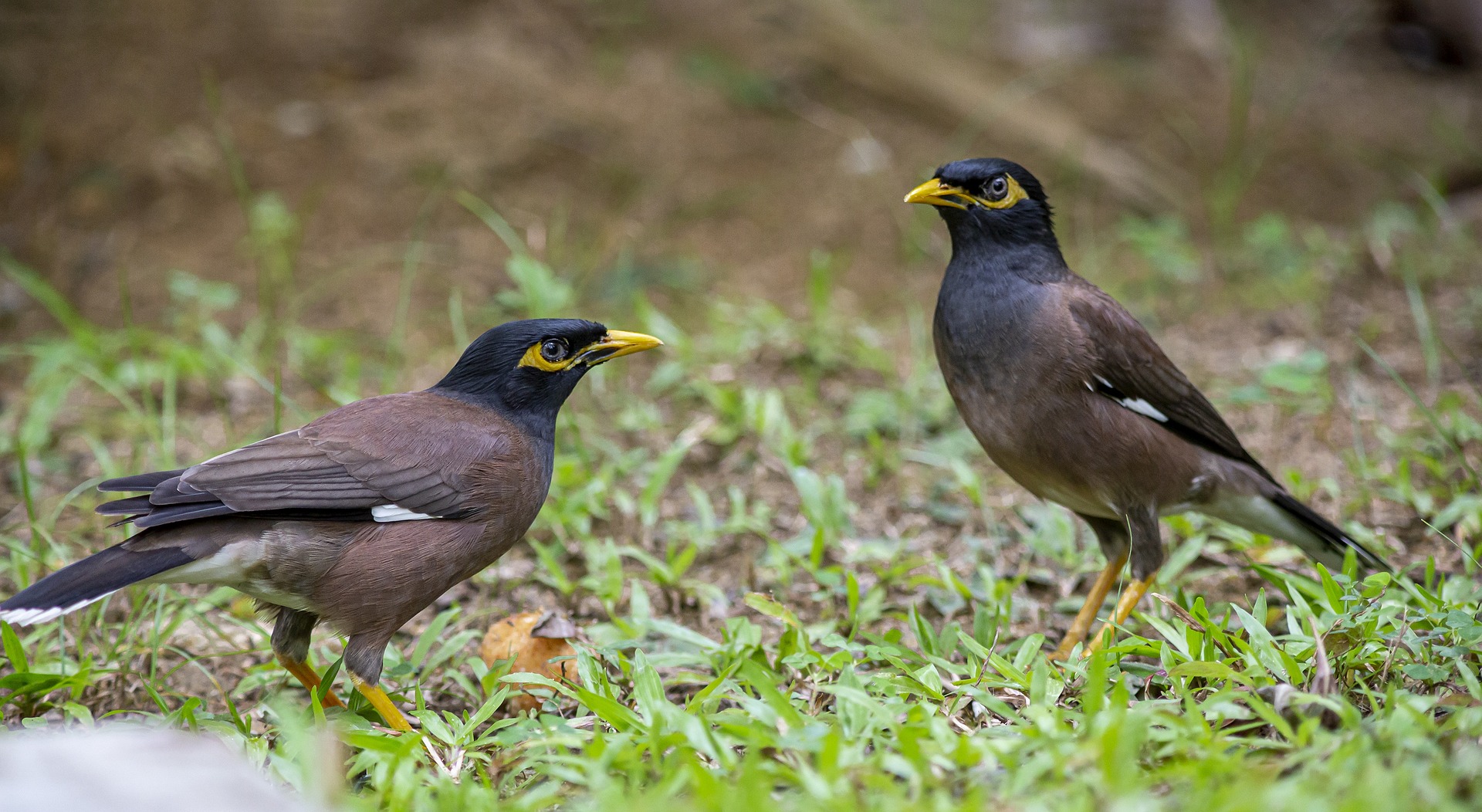The Common Myna (Acridotheres tristis), also known as the Indian Myna or Indian Mynah, is a bird species belonging to the starling family, Sturnidae. Known for its adaptability to urban environments and distinctive appearance, the Common Myna is one of the most recognizable birds in its range. Here’s an overview of the Common Myna:
Appearance:
- Size: The Common Myna is a medium-sized bird, measuring about 23 to 26 centimeters in length.
- Coloration:
- Plumage: It has brown body feathers with a glossy black head, neck, and upper breast.
- Eyes and Bill: The bird features bright yellow eye patches (bare skin around the eyes) and a yellow beak.
- Wings: The wings have prominent white patches that are conspicuous in flight.
- Legs: The legs and feet are also yellow.
Habitat:
- Preferred Habitats: The Common Myna is highly adaptable and can thrive in a variety of habitats including urban areas, agricultural fields, open woodlands, and even human settlements.
- Geographic Range: Native to South Asia, the Common Myna has been introduced to many other parts of the world, including Australia, the Middle East, and various Pacific islands.
Behavior:
- Feeding: The Common Myna is omnivorous. It feeds on a wide range of food items including insects, fruits, grains, and human food scraps. It is known for foraging on the ground and exploiting food resources in urban environments.
- Social Structure: Mynas are social birds, often seen in pairs or small groups. They are known for their loud calls and complex vocalizations.
- Nesting: They nest in tree holes, buildings, and other cavities. The nests are constructed using twigs, leaves, and other plant materials, and sometimes even human-made debris.
Life Cycle:
- Breeding: The breeding season varies with location but generally spans from March to September in its native range.
- Eggs: Females lay 4 to 6 eggs, which are pale blue or greenish-blue in color.
- Incubation and Fledging: The eggs are incubated for about 13 to 18 days. Chicks fledge approximately 22 to 27 days after hatching.
Ecological Role:
- Seed Dispersal: As part of their diet includes fruits, Common Mynas can aid in seed dispersal.
- Pest Control: They help control insect populations by feeding on a variety of insects and other small invertebrates.
Conservation Status:
- Population: The Common Myna is abundant and widespread in its native and introduced ranges. It is not considered threatened.
- Invasive Species: In many introduced regions, the Common Myna is considered an invasive species. It can outcompete native birds for food and nesting sites, leading to negative impacts on local biodiversity.
Interesting Facts:
- Adaptability: The Common Myna’s adaptability to urban environments has contributed to its success as a species.
- Vocal Mimicry: Mynas are known for their ability to mimic human speech and other sounds, making them popular as pets in some cultures.
- Intelligence: They are intelligent birds with problem-solving abilities, often observed manipulating objects and opening trash bins to access food.
Identification Tips:
- Distinctive Yellow Features: Look for the bright yellow eye patches, beak, and legs.
- Brown and Black Plumage: The contrast between the brown body and black head and neck is a key identifying feature.
- White Wing Patches: The white wing patches are especially noticeable during flight.
In summary, the Common Myna (Acridotheres tristis) is a highly adaptable and intelligent bird species with a widespread presence. Its ability to thrive in urban environments, along with its distinctive appearance and vocal abilities, make it a notable bird in both its native and introduced ranges. However, its status as an invasive species in some areas highlights the complex dynamics of species introduction and ecosystem impact.
Views: 1773
Subscribe to the newsletter:
